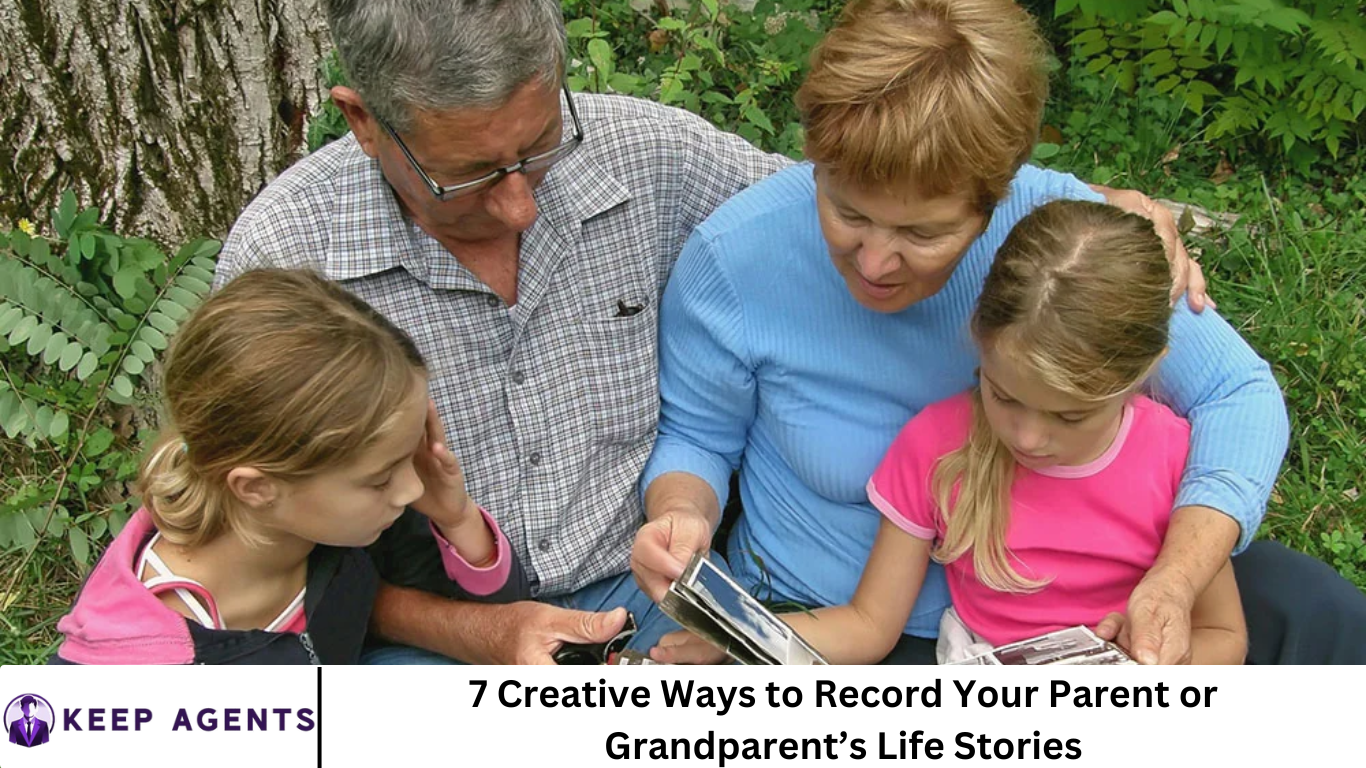Preserving family history is one of the most meaningful gifts you can give to future generations. Your parents and grandparents hold a treasure trove of stories, memories, and wisdom that deserve to be remembered and shared.
While traditional methods like written memoirs and audio interviews are valuable, there are also creative, engaging ways to bring their stories to life. In this article, we’ll explore seven creative ways to record your parent or grandparent’s life stories—methods that go beyond pen and paper to capture their legacy in ways that are interactive, heartfelt, and even fun.
More Read: Creating a Family History Book: Step-by-Step Instructions
1. Create a Video Documentary
Video is a powerful medium that combines visuals, sound, and emotion. Creating a documentary-style film allows you to capture your loved one’s voice, expressions, and environment in a way that written text cannot. Start by planning a series of interviews and filming them in comfortable settings. Use old photos and home videos as b-roll footage to enrich the narrative.
Tips:
- Prepare questions in advance, focusing on different life stages.
- Use a good quality camera or smartphone with a tripod.
- Edit using free tools like iMovie or DaVinci Resolve.
- Include subtitles for accessibility and future-proofing.
Not only does this method preserve memories, but it can also become a cherished family film that generations can enjoy.
2. Design a Story Scrapbook or Memory Journal
A scrapbook is more than a photo album. It’s a creative, tactile way to tell a life story using pictures, mementos, and written anecdotes. Use a blank journal or a digital scrapbooking tool to compile images, handwritten notes, ticket stubs, newspaper clippings, and more.
Tips:
- Organize by themes such as “Childhood,” “Career,” “Family Holidays,” etc.
- Encourage your parent or grandparent to write captions or narrate short stories to accompany each page.
- Use decorative elements to personalize each spread.
Scrapbooks make wonderful gifts and are particularly appealing to visual learners.
3. Host a Storytelling Dinner or Family Event
Turn storytelling into a communal experience by hosting a themed dinner or family gathering centered around your loved one’s life stories. Set the atmosphere with old music, family recipes, and vintage decor.
Tips:
- Record the event with video or audio equipment.
- Assign different family members to ask questions or prompt specific stories.
- Collect everyone’s reflections or notes afterward to include in a keepsake book.
These events not only foster connection but also create vivid memories tied to the stories being shared.
4. Launch a Family Podcast Series
Podcasts are an increasingly popular medium, and starting a family podcast can be a fun and accessible way to record life stories. It requires minimal equipment and allows you to produce episodes around different topics or time periods.
Tips:
- Use free recording software like Audacity or Anchor.
- Create a consistent format with intro music, segment structure, and episode themes.
- Involve multiple generations in hosting and interviewing.
Podcasting provides a casual, conversational format that captures the warmth and spontaneity of oral history.
5. Develop a Digital Timeline or Interactive Biography
Create a visual, interactive timeline using digital tools like Prezi, Tiki-Toki, or even a custom Google Site. This format allows you to map out key events, upload photos and videos, and add descriptive text in a dynamic way.
Tips:
- Start with birth and early years, and build chronologically.
- Link to scanned documents like birth certificates or diplomas.
- Add interviews and personal commentary at different points.
This method is particularly engaging for younger generations who enjoy multimedia content and interactive experiences.
6. Make a Family Recipe Book with Stories
Food is deeply tied to culture and memory. Create a recipe book that not only lists favorite family dishes but also includes the stories, traditions, and people behind them.
Tips:
- Have your parent or grandparent help recreate recipes, and take photos during the process.
- Record their memories associated with each dish.
- Include sections like “Holiday Favorites,” “Everyday Meals,” and “Cooking with Kids.”
Compile the book using platforms like Canva or Blurb for a polished look. It’s a delicious way to pass down both heritage and heart.
7. Use AI Storytelling Tools and Voice Cloning
New technologies can help bring stories to life in incredible ways. AI storytelling platforms can help structure and expand oral narratives into written stories. Voice cloning and animation tools can even recreate a digital version of your loved one sharing their stories.
Tips:
- Use tools like StoryWorth, LifeStory, or MyHeritage DeepStory.
- Ensure you have permission and understand the ethical considerations.
- Use the output to supplement more traditional storytelling formats.
While more high-tech, these methods offer unique and futuristic ways to preserve and share memories.
Frequently Asked Question
Why is it important to record my parent or grandparent’s life stories?
Recording their stories helps preserve family history, honors their legacy, and creates a meaningful connection across generations. It also ensures that their memories, values, and experiences aren’t lost over time.
What if my parent or grandparent is shy or reluctant to share their stories?
Start with casual conversations or low-pressure activities like scrapbooking or cooking together. Use prompts or photos to jog memories, and emphasize that their stories matter to you and future generations.
What tools do I need to create a video documentary or podcast?
For video: a smartphone or digital camera, tripod, and editing software (like iMovie or DaVinci Resolve). For podcasts: a microphone, recording software (such as Audacity or Anchor), and a quiet space for clear audio.
How can I involve other family members in these projects?
Invite siblings, cousins, and kids to help with interviews, event planning, editing, or collecting photos and artifacts. Multi-generational collaboration not only shares the workload but also strengthens family bonds.
What if I don’t have a lot of old photos or memorabilia?
Focus on oral storytelling, videos, or written narratives instead. You can also gather public records, neighborhood photos, or cultural references from the era your loved one grew up in to add historical context.
Are digital storytelling methods safe and private?
Yes, with proper precautions. Choose secure platforms, read privacy policies, and get consent before sharing publicly. For sensitive content, opt for private access links or cloud storage limited to family members.
How do I ensure these stories last for future generations?
Use cloud storage, back up files on external hard drives, and consider printing hard copies of scrapbooks or books. Platforms like Blurb, Canva, or archival-grade photo albums can help preserve stories for decades.
Conclusion
Capturing your parent or grandparent’s life stories doesn’t have to follow a single mold. By thinking creatively and embracing different formats, you can honor their legacy in a way that feels authentic and resonant. Whether through video, food, podcasts, or interactive timelines, these stories are more than just memories—they are the roots of your family’s identity. Start today, and create something meaningful that future generations will treasure forever.


